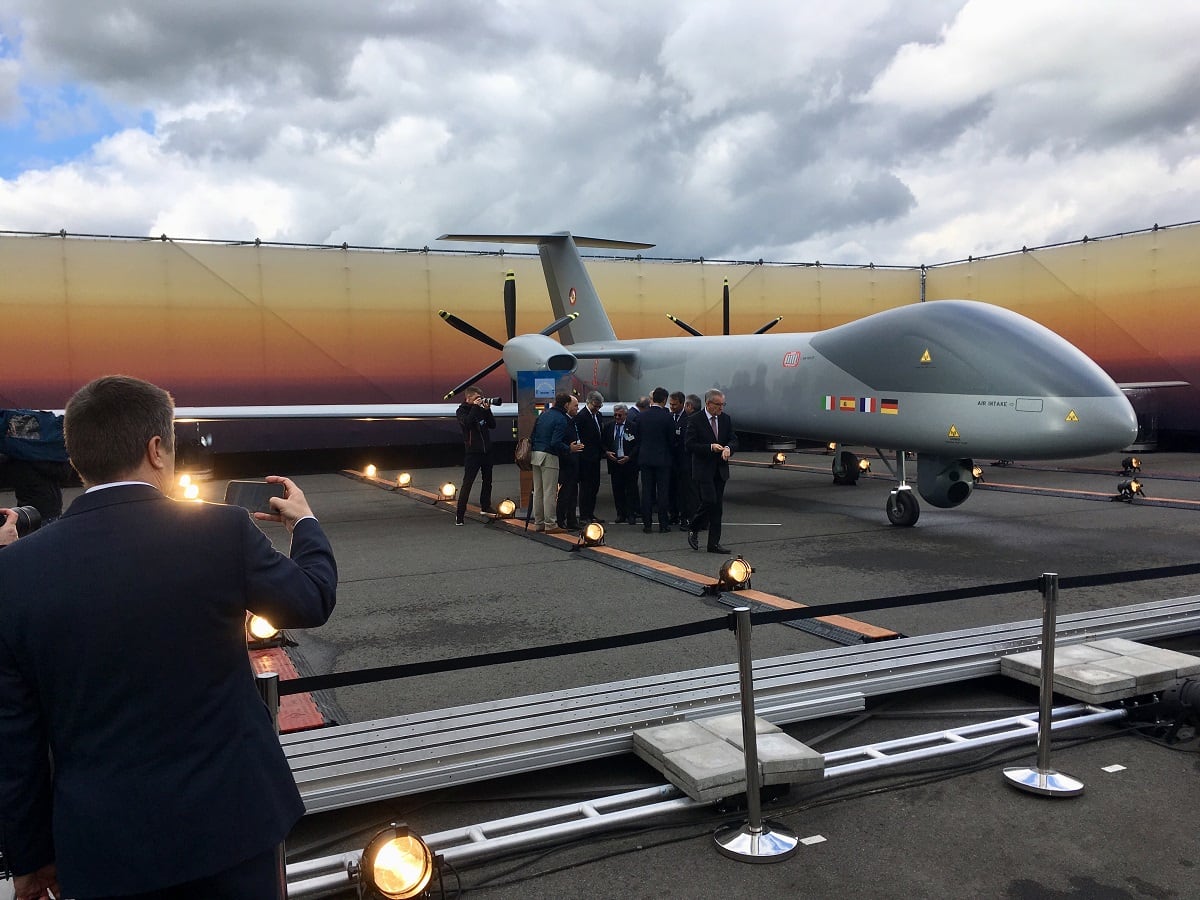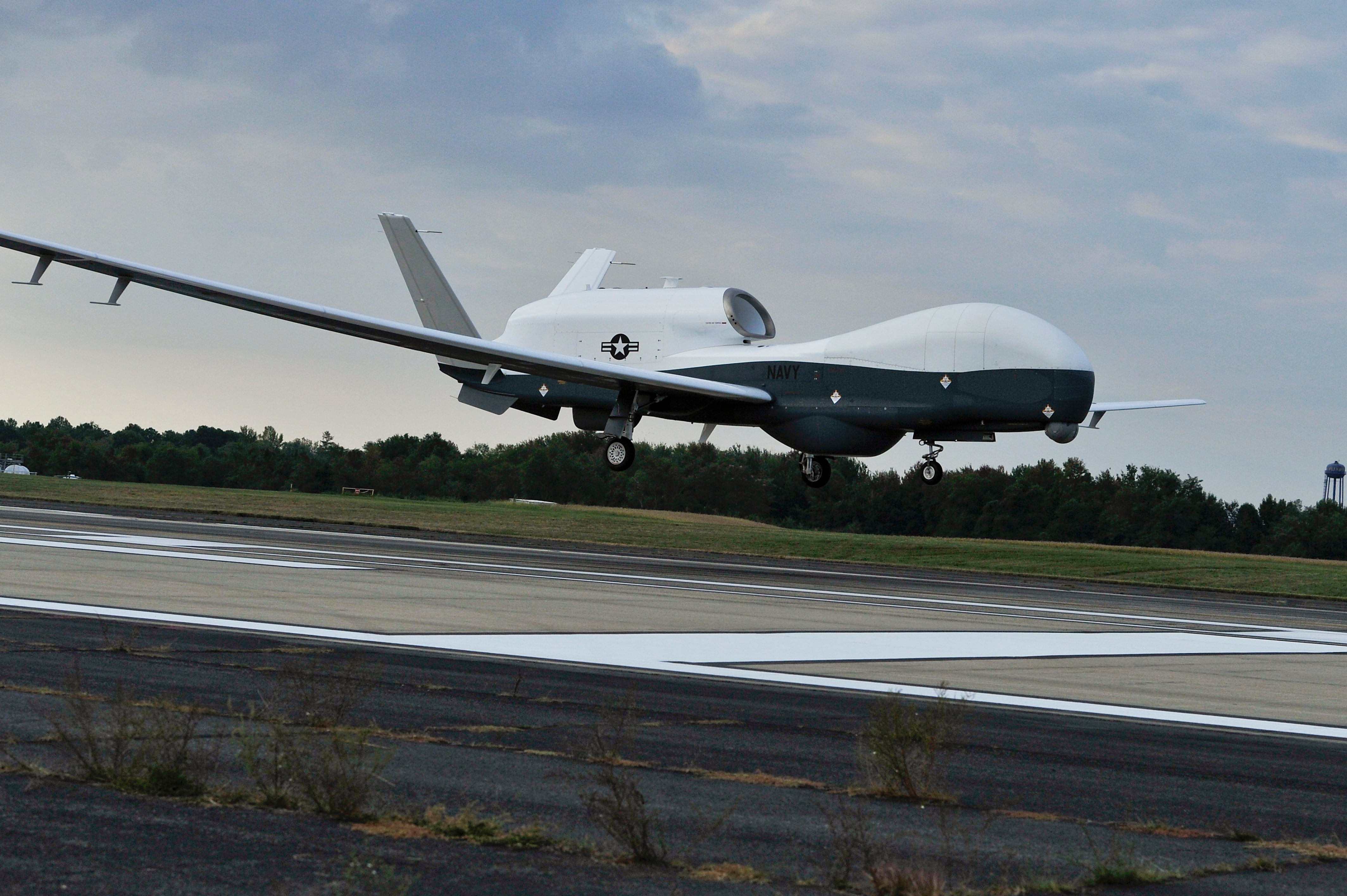COLOGNE, Germany — German radar specialist Hensoldt announced a successful test of the company’s collision-warning radar for unmanned aircraft this week, joining an upcoming industry race to make subsystems for the Eurodrone.
Commissioned by the German Defence Ministry’s acquisition arm, the test entailed strapping a preliminary version of Hensoldt’s detect-and-avoid system to the nose of a manned Dornier Do 228 of the German Aerospace Center. The radar “reliably detected the test aircraft approaching at different altitudes and angles,” the company wrote in a statement.
Recreating a human pilot’s ability to avert midair collisions remains a largely unsolved problem in unmanned aviation. Military drones flying at similar altitudes as commercial airliners therefore must remain in restricted areas until a suitable technology is found and certified as safe by regulators.
The planned European medium-altitude drone, however, is intended by lead nations France, Germany, Italy and Spain to be safe enough to fly in the same airspace as civilian air traffic. That requirement brings back unpleasant memories in Germany, where a previous attempt to field the similarly sized Euro Hawk surveillance drone came crashing down because the aircraft never gained the required certifications.
Airbus Defence and Space, Dassault Aviation, and Leonardo are the main contractors for the new drone program, officially dubbed European MALE RPAS and envisioned to be ready by the mid-2020s. The European multinational Organisation for Joint Armament Co-operation, or OCCAR, manages the effort.
RELATED

Dietmar Klarer, Hensoldt’s technical project lead, said a key element of the company’s offering is a 110-degree field of view on each side, making it slightly wider than a human looking over each shoulder. The system’s forward-looking angle is 15 degrees each upward and downward at a range of 10 kilometers.
He said the Achilles' heel of collision-avoidance systems typically has been achieving sufficient measurement accuracy across angles to determine potential collision points. The systems also require a high enough radar-signal update rate to detect fast-moving aircraft.
Even though Hensoldt’s radar demonstrator mock-up lacks features that would be found in the final product, including the required miniaturization to fit into a drone nose, Klarer said the test proved that all performance objectives can be met. That includes balancing the computing load between the task of collision avoidance, as well as another key safety feature included in the same sensor: weather radar. Additional tests are planned to fine-tune the design, the company said.
The race for a reliable sense-and-avoid system has been unfolding in many countries operating drones, including other partner nations of the Eurodrone.
RELATED

Asked by Defense News how close OCCAR is to making vendor decisions for the system, an organization spokesman provided the following emailed statement: “A global contract, covering development and production, as well as an initial in-service support phase is currently under preparation.
“In that scope, the definition of the European MALE RPAS includes provisions for additional non-cooperative air traffic integration equipment (e.g. a detect-an-avoid system). Any activities aimed at full/unrestricted air traffic integration of the system will be covered by a separate contract at a later stage.”
Another line of effort toward a continentwide approach to the unmanned detect-and-avoid problem comes from the European Defence Agency. Follow-on efforts to the agency’s Mid Air Collision Avoidance System aim to develop a collection of technical standards.
Sebastian Sprenger is associate editor for Europe at Defense News, reporting on the state of the defense market in the region, and on U.S.-Europe cooperation and multi-national investments in defense and global security. Previously he served as managing editor for Defense News. He is based in Cologne, Germany.








